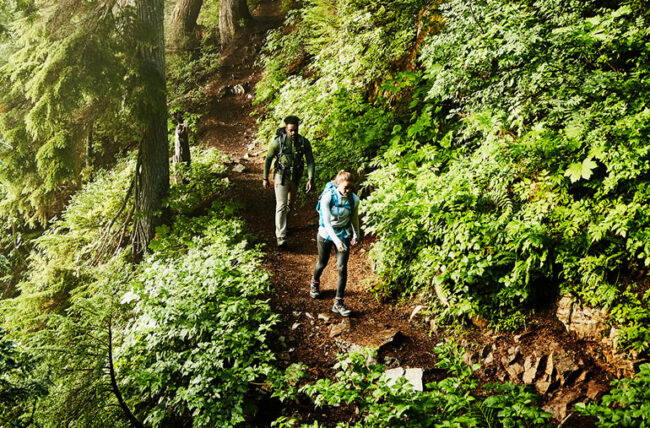When it comes to defining the terms, an expert on the subject is Oxford Dictionary. We all know of it and use it. According to Oxford Dictionary:
Trekking means to make a long or difficult journey, especially on foot.
Hiking is the activity of going for long walks in the country for pleasure.
Looking at these definitions, you can see that there is not much to distinguish between the two activities. They both essentially mean long walks. However, with trekking, you need more time and better organisation. That is the main distinction between trekking and hiking. Also, hiking is described as a “walk”, whereas trekking is a “journey”. That indicates that trekking is more than just a simple walk.
Here are the difference between these walks.
- Duration
Duration is one of the most prominent distinctions between these two activities. Trekking usually lasts at least two days, but often even longer than that. People that go trekking more often than not have a destination in mind. They aspire to reach this destination and can walk thousands of kilometres per trekking trip. On the other hand, hikes are shorter in duration compared to trekking. When somebody goes hiking, that is, in most cases, a few hours long walk or even a whole day of hiking. Hiking can also be an overnight experience, but it won’t take several days as trekking would usually
- Terrain
Another difference between trekking and hiking is the type of terrain that falls under these categories. Hikers often use hiking trails marked and go through mountains, forests, hills, or other natural environments people want to explore. In comparison, trekking journeys are not always on marked trails and often go through unexplored nature such as mountains, roads, beaches, forests, and much more. In this aspect, trekking has more freedom because trekkers don’t conform to trails and markings. This way, they see untouched nature.
- Equipment
The equipment necessary for hiking and trekking can’t be the same logically. You will only need the basics on a hike – good shoes or boots. The latter must be suitable for mountain terrain. Do not forget appropriate clothing that can handle sudden changes in weather or temperatures and a backpack where you keep water, food, and other necessities. With hiking, there is no need for compasses or maps. More often than not, hiking trails are marked, and there are signs indicating where you should go and how far it is from your current location. The case is different when it comes to trekking. You would need a bit more equipment for trekking. Starting with a map or a compass, sleeping bags, sleeping mats, waterproof jackets, walking poles, multi-purpose clothing that’s breathable and fast-drying, etc.
- Difficulty
By now, you know that trekking requires a different level of effort. It is not for everybody. It takes physical preparedness and training to trek for days without stopping. It’s an activity that takes a lot of time, goes through different terrains, and requires mental and physical preparedness. On the other hand, hiking is a leisure activity. It can be done by many even if they haven’t hiked before. With hiking, it’s also easier to choose the right trail for your physical abilities. Usually, the paths come with a difficulty level, or they state how long they are, so you can more or less be aware of how difficult it will be. You can choose a trail easy in difficulty or moderate if you are not hiking often and feel like that is your threshold.
A fun fact is that the Guinness’ World record for the fastest trek to the North Pole took 41 days, 18 hours, and 52 minutes. The length of the trekking path was 785km.* This explains perfectly how demanding trekking can become if you’re willing to push your limits.
- Accommodation
As previously mentioned, hiking can also be an overnight experience. Even in that case, the base is usually one place. For example, people stay in a mountain hut and go hiking each day to a different peak, always returning to the mountain hut as their base. People who practice trekking never return to the location they’ve been at before. Their journey focuses on a specific destination. Each time trekkers stop, they stay in a different accommodation. Whether that is a hotel, lodge, mountain tent, or another type of accommodation depending on the trekking route and the weather conditions.
Hiking is a shorter, easier journey, commonly walked on looped marked trails, to-and-back, or even destination hikes. Trekking always involves a specific destination. A trekking path goes through different, often rough terrains and requires more equipment and preparedness of the person doing
source: mayamaya.com
We’ve got the edge. Get real-time reports, breaking scoops, and exclusive angles delivered straight to your phone. Don’t settle for stale news. Join LEADERSHIP NEWS on WhatsApp for 24/7 updates →
Join Our WhatsApp Channel










